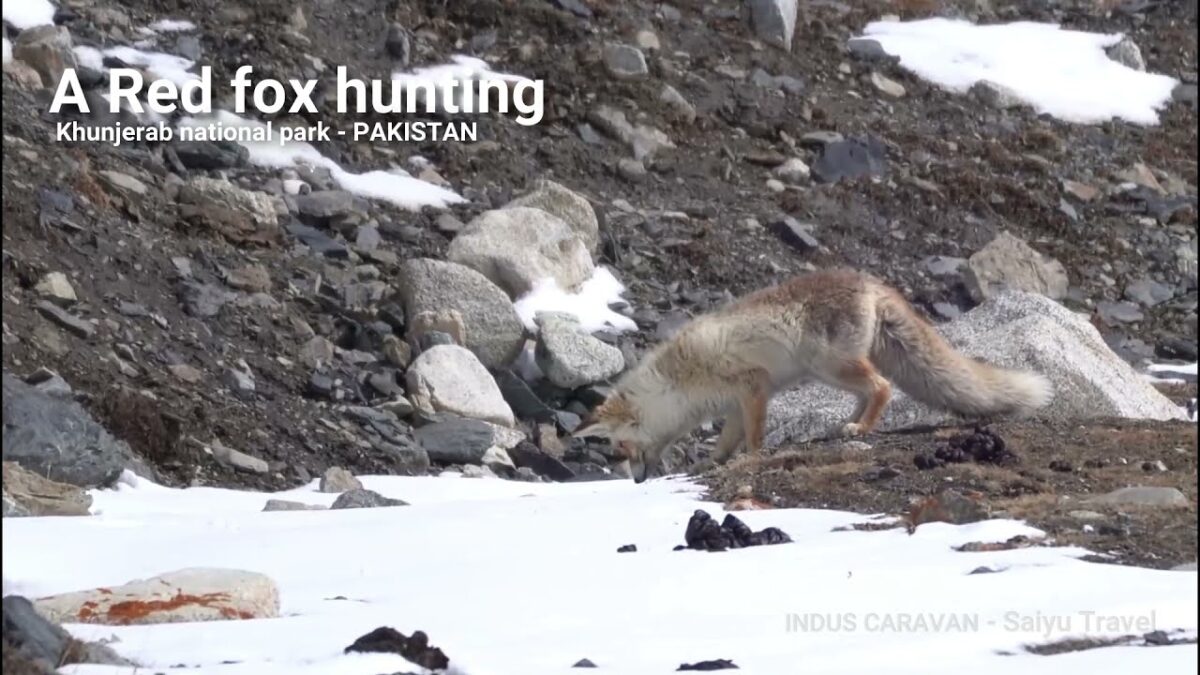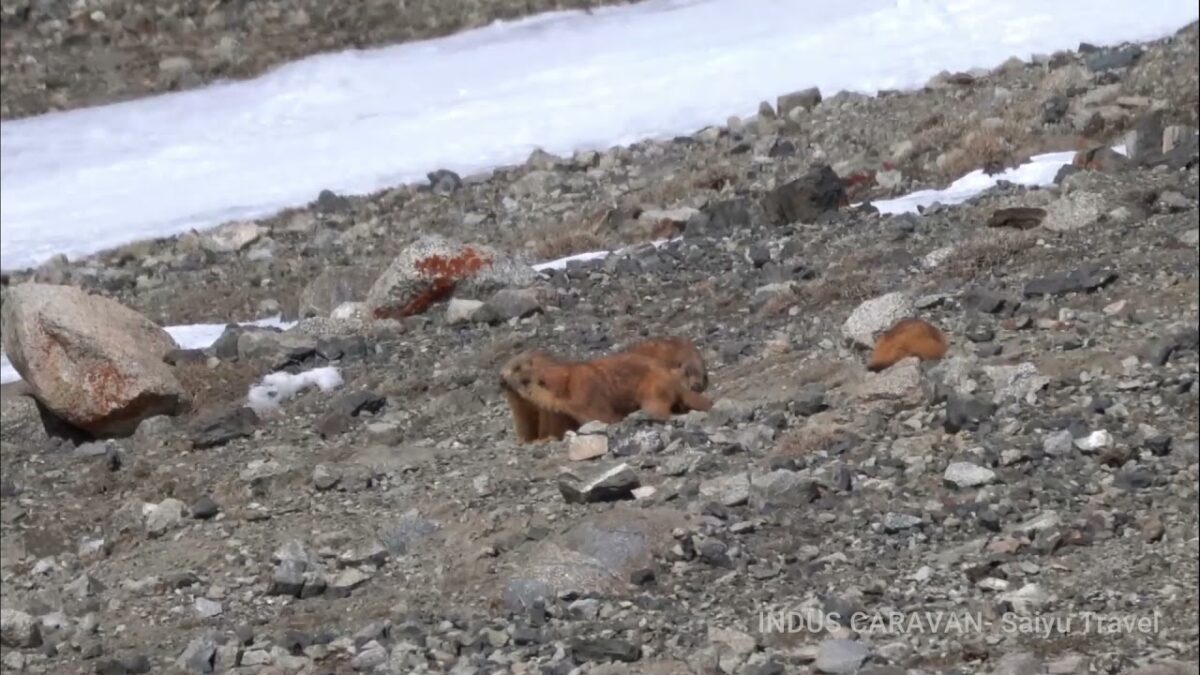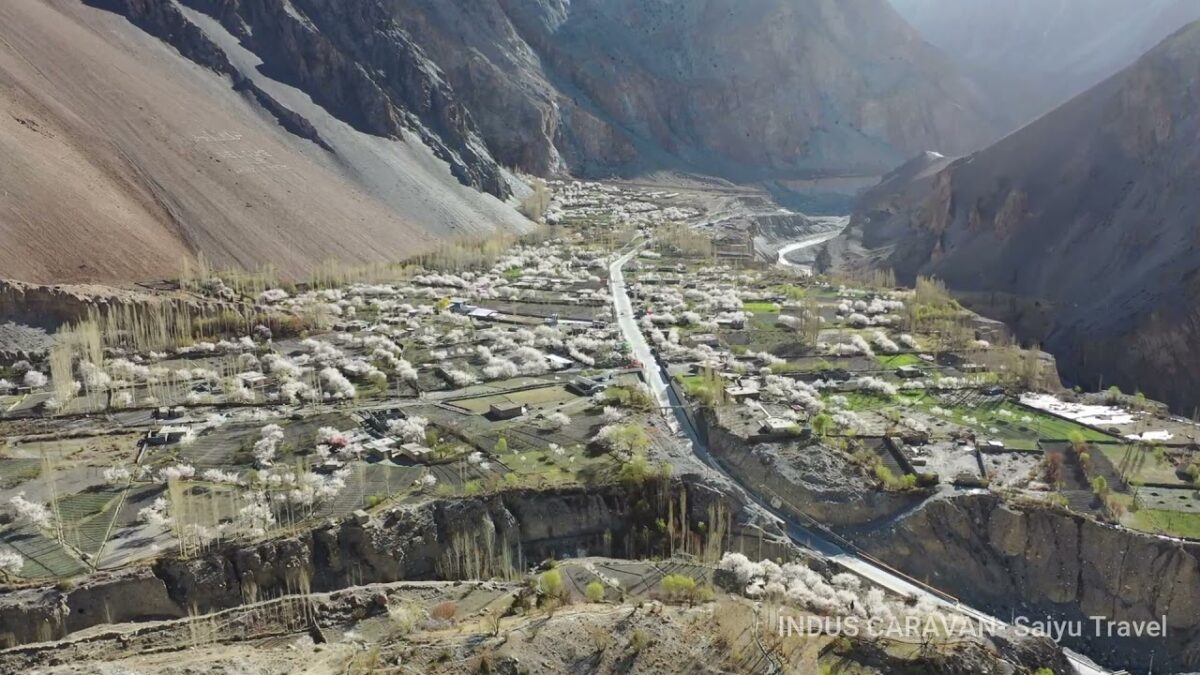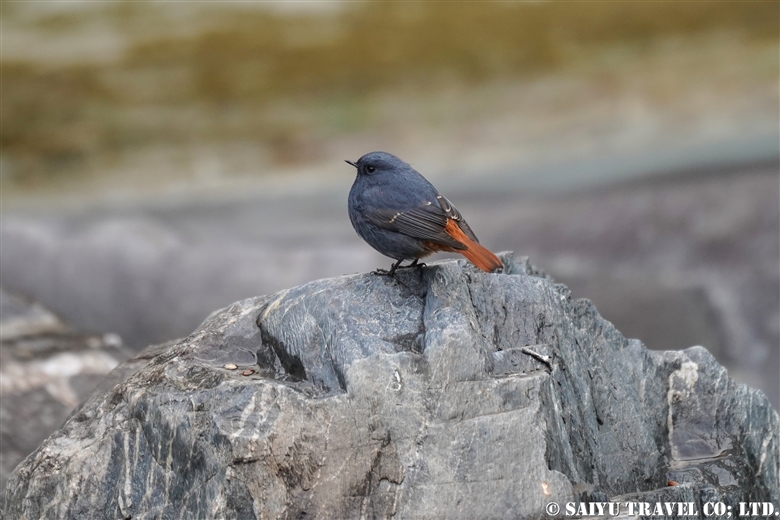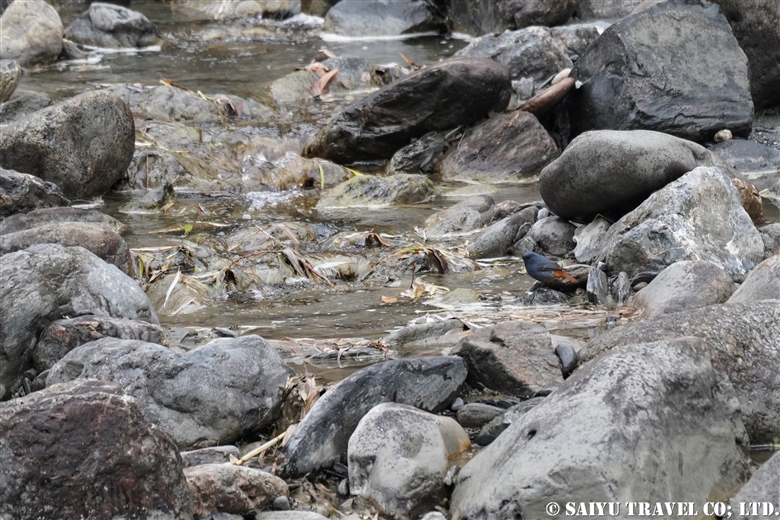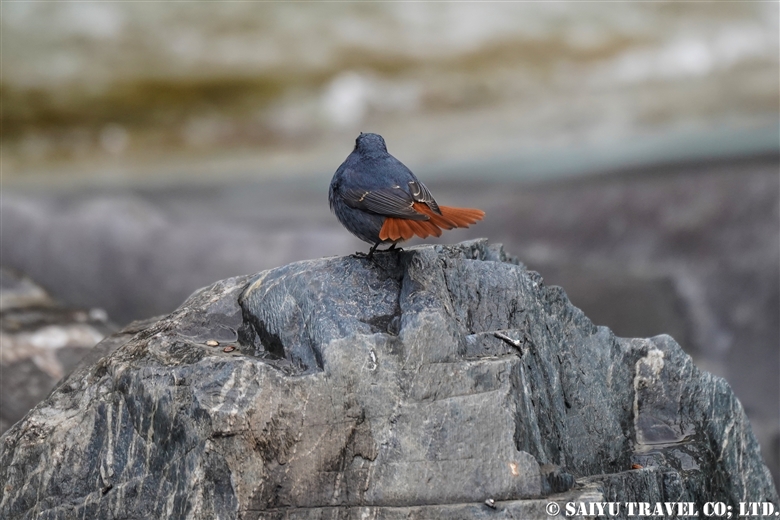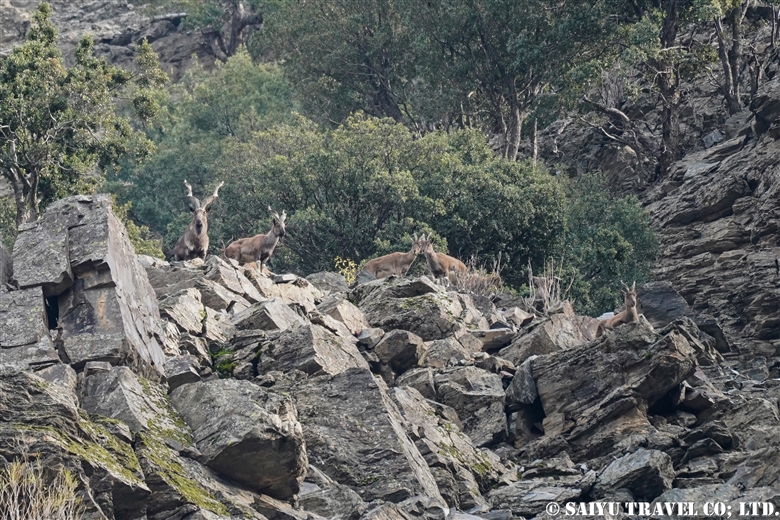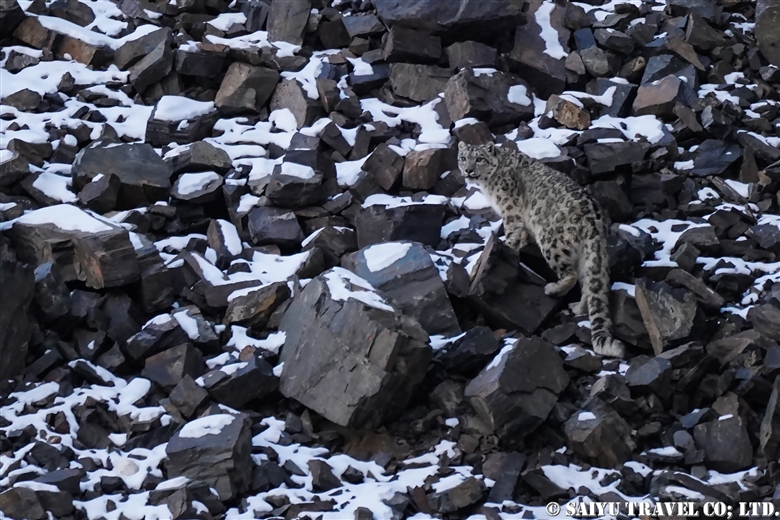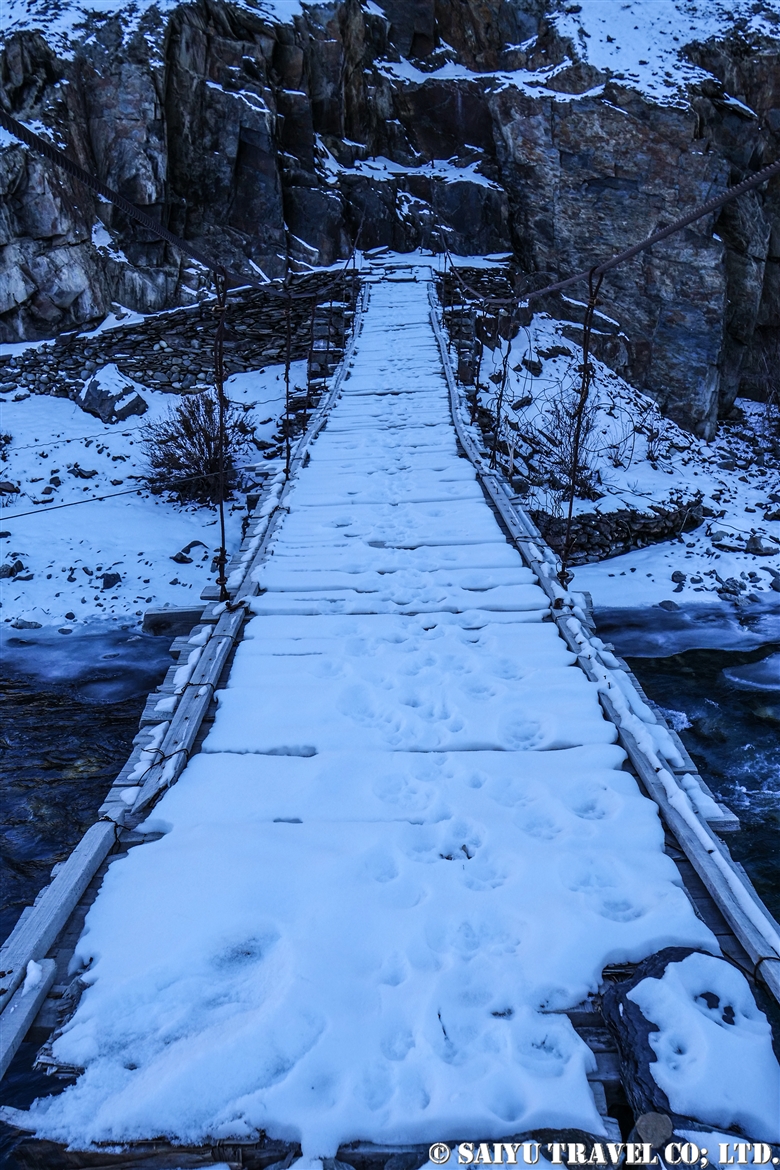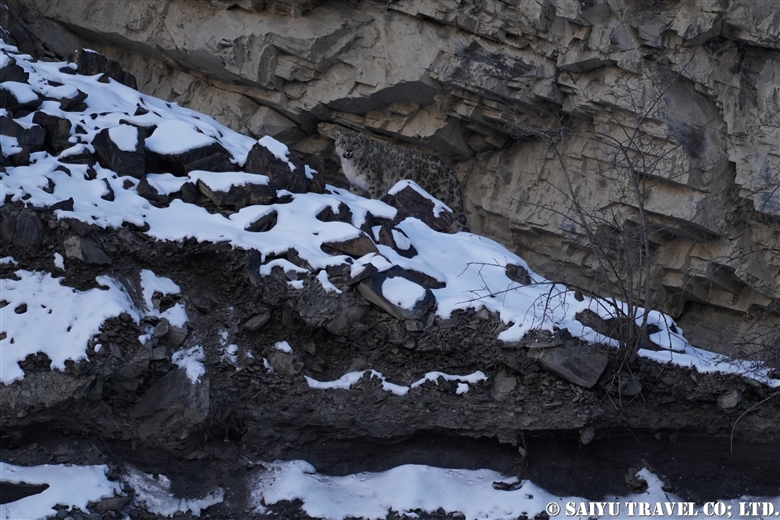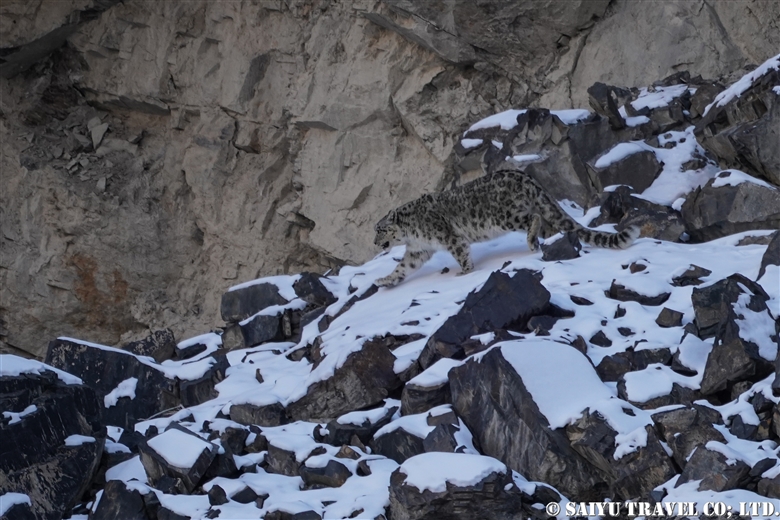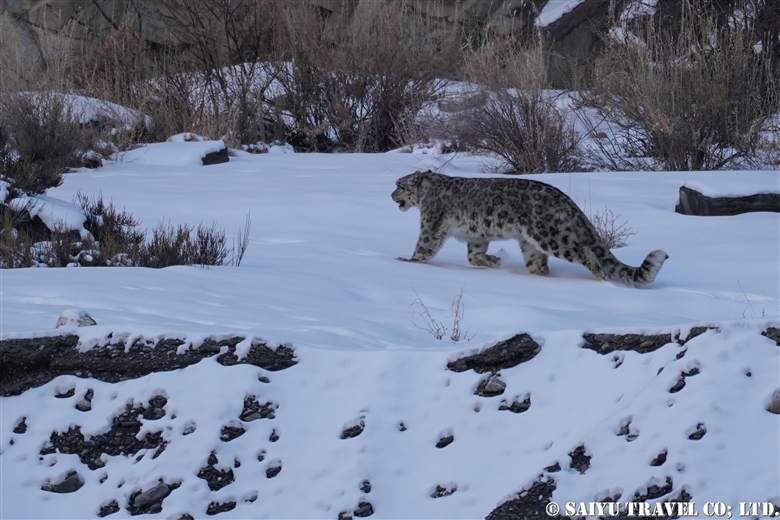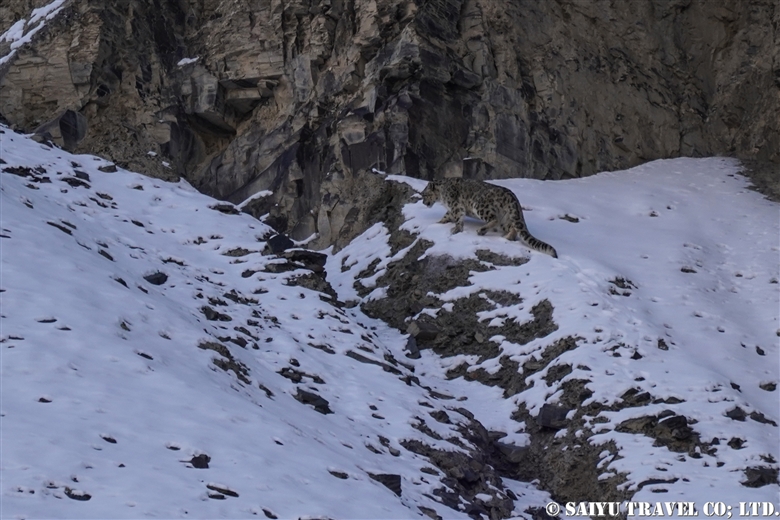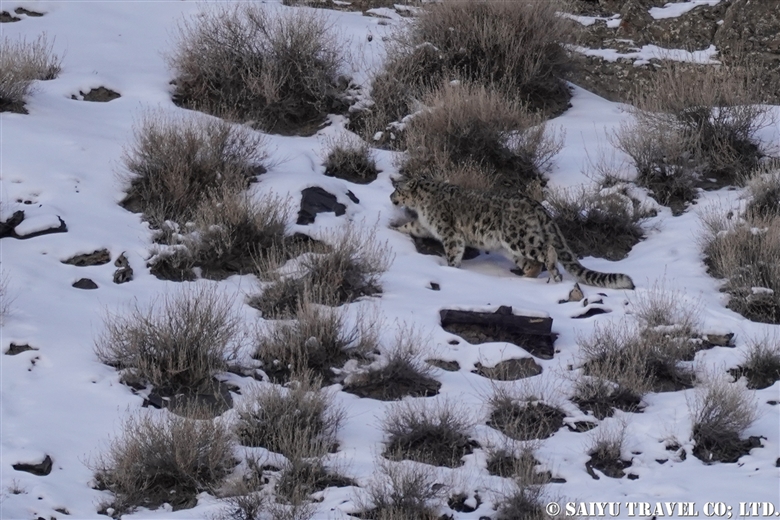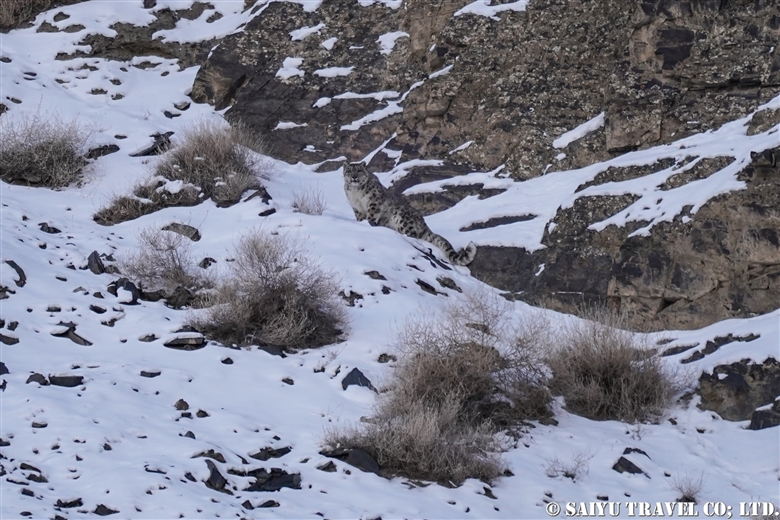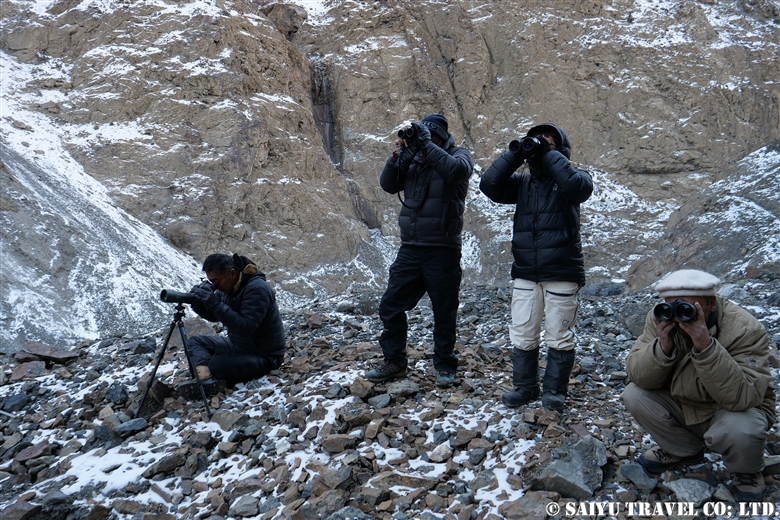This is a report from the Spring Snow Leopard Expedition. The event happened when we only had two more days left in the trip. While driving through Khunjerab National Park, we saw snow leopards at a very close proximity. It was a mother with 2 cubs as they were feeding on an ibex carcass.
Of course, the snow leopard mother and cubs were surprised by our appearance, and scampered to the edges of the cliff. The encounter lasted for about 3 minutes, and we were all silent, with just the sounds of the clicks of our cameras making noise.
Snow leopards sighted from the Karakoram highway
After they disappeared over the ridge, we decided to continue to look for them for the rest of the day, adjusting our location to see if we could see them from a different angle.
Videography & text :Mariko SAWADA
Observation : April 2021, Khunejrab National Park, Gilgit-Baltistan
*Contact us, Indus Caravan for more information or to make arrangements for observing wildlife of Pakistan.
*Youtube Facebook Instagram << Please check our update activity !
Category : - Snow Leopard > = Video Clip Gilgit-Baltistan > - the Karakoram Highway > ◆ Gilgit-Baltistan > ◇ Wildlife of Pakistan > - Khunjerab National ParkTag : Snow Leopard Pakistan , Pakistan Travel company , Travel Pakistan Blog , Pakistan tour operator , Wildlife of Pakistan , Pakistan Photography Tour , Indus Caravan , Wildlife Photography Pakistan , Wildlife Tour Pakistan , Saiyu Travel Pakistan , Snow Leopard Expedition , Khunjerab National Park , Pakistan Blog , Snow Leopard Conservation , Pakistan Travel Blog , Snow Leopard





-1200x675.jpeg)
-1200x675.jpeg)





















